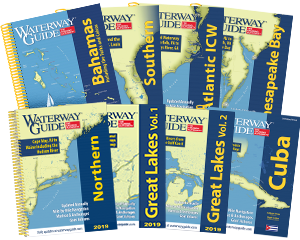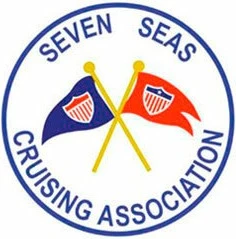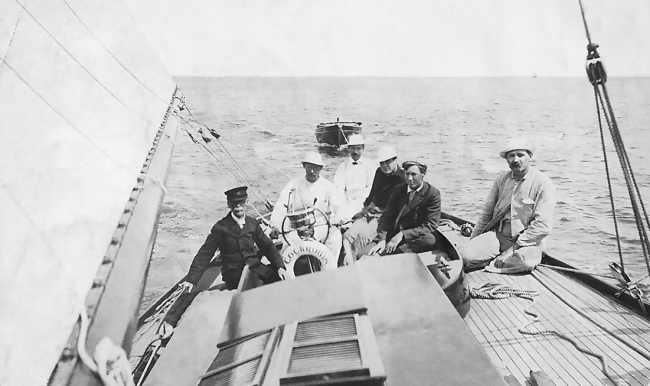
America's late 19th and early 20th century success combined with focus on its ascending identity created new opportunities and a class of entrepreneurs that the nation had not known prior. Emerging during that period in Boston, Massachusetts, was a family that enjoyed immense success attributed to temperance, intellect and determination. Their good fortune had a profound influence on Waterway Guide Media's success that remains evident a half century later.
As the nation struggled with how to address the issue of prohibition, Thompson's Spa in Boston rose to prominence as a soda fountain, then lunch counter and, ultimately, a chain of restaurants. A destination for customers who wanted "soft drinks," good food and extraordinary service from a loyal staff, the spa became a landmark under the guidance of Charles Sumner Eaton, an engineer with a degree from MIT and an eye for detail. The temperance movement, as measured at the end of the 19th century, was instrumental in the spa's success.
A small empire widened for the Eaton family who joined the wealthy class of Boston, enjoying yachts and well-appointed homes on the east and west coasts. Valued at over $35 million in today's dollars, Charles S. Eaton bequeathed enough of his wealth to his three sons, even as they worked in the family enterprise, that each of them was able to enjoy life at an early age reserved only for a few.
The youngest son, Charles F. Eaton, was born in 1895. He graduated from Harvard, served briefly in the Army during WW I and by 1927 began yachting and cruising with his wife Melba aboard a new 43-foot Dawn Corporation boat that he named NOMAD. They were married for forty-seven years until her death in 1968. Along the way they traveled the east coast in four different boats named NOMAD, entertaining, documenting and exploring.
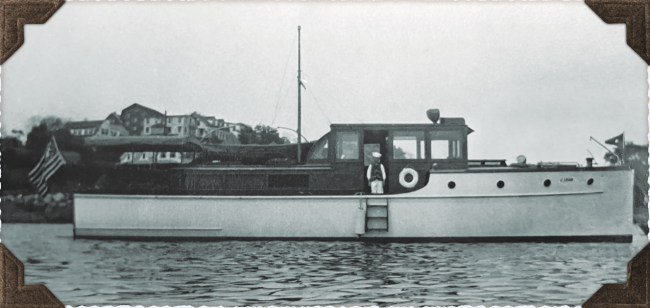
Elegantly depicted in Charles' diaries, journals and logs, the Eatons cruised from harbor to harbor and various anchorages along the way. Days were spent swimming and visiting towns, and nights at local yacht clubs, movie theaters and restaurants with friends who joined them or that they met while voyaging. Charles purchased NOMAD II (his second Dawn Corporation cruiser) just before the stock market's crash and the beginning of the Great Depression. Even so, it was not until 1932 that he took a hiatus from yachting. Business was off, a brother had died and, while not reflected in his papers from the time, the depth of the Depression must have taken its toll. Charles kept NOMAD II tied to the dock for four years.

By 1936 they were back aboard. The excursions were now longer, and Charles and Melba were touring farther south, discovering Florida and in between with their two sons, Randolph and Richard, born 1923 and 1925, respectively. Charles and his family visited and logged scores of ports and anchorages aboard the 47-foot NOMAD II while transiting the increasingly popular Intracoastal Waterway (ICW) through the late 1930s. With the onset of WW II, focus shifted from pleasurable pursuits.
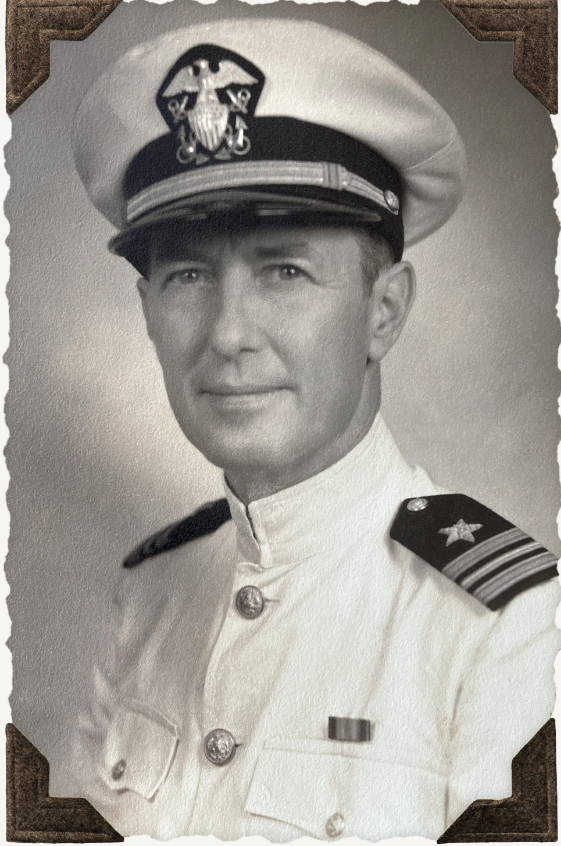
LCDR (USNR) C. F. Eaton was stationed for a time in the Panama Canal Zone while Melba was at home in Boston. In 1943 they received a telegram that their eldest son, Randolph, had been killed at the Mareth line sector in Tunisia after leaving Bowdoin College early to volunteer as an ambulance driver with the American Field Service. Little more was written about journeys aboard NOMAD II, which disappears from the official USCG documentation records in 1947.

By 1948 NOMAD III was the new boat for Charles and Melba. The few organized accounts remaining of their travels on the 39-foot Matthews cruiser include notes in logbooks related to fuel and destinations. Charles was a dedicated diarist, and his penciled notes inhabit numerous scratch pads and journals. Perhaps lost to time and from moving about, the leather-bound typewritten, orderly and photo-filled editions that were assembled in the early years are not to be found after 1938. But there are delightful photographs from those years, albeit few with dates.

Beginning as Inland Waterway Guide, the book dedicated to offering advice and information to adventurers about "all the places to stop, all the places to see," was published initially by Marina Publishing House in Wilmington, NC in 1947. Little is known about the original title, but copies from the 1948-49 edition have been located and the first publisher, Allen C. Ewing, has been identified. He transferred (or sold) the rights to Charles F. Eaton in 1951. As the new owner, C.F. Eaton organized his enterprise, set up an office in Fort Lauderdale and acquired NOMAD IV, a 66-foot Lawley yacht built in 1929. Signing his name with (Aboard NOMAD IV) in his forewords, on the publisher's pages and in editorial submissions of the early years' editions, the company was off to a new future under his guidance.
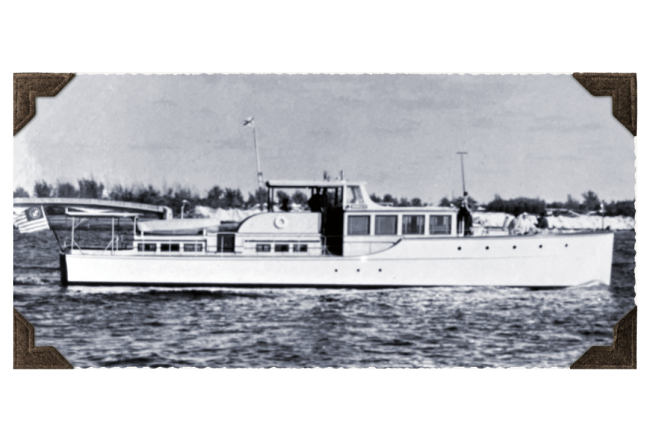
His son Richard joined the company as advertising manager. Eaton also called on other writers and publishers to work with him in making the guidebooks relevant and accurate, including the prolific and respected author of cruising guides, Fessenden S. Blanchard, a fellow Harvard graduate. An advisory board was established comprising leading marine industry executives and maritime officials. New titles were released, including a Northern and Great Lakes edition.

Then in 1961, after owning four yachts named NOMAD within a span of over thirty-four years, at the age of sixty-six Eaton took a 21-foot open power boat from Maine to Florida to conduct research and publicize the Inland Waterway Guide. His indefatigable spirit of adventure was focused on promoting America's waterways as destinations worthy of exploration and boating as an alternative to idleness. By 1966 ownership of the Inland Waterway Guide was unsettled and once again changed hands. In 1980 Charles F. Eaton died a few weeks shy of his ninetieth birthday.
That a temperance soft drink soda fountain in Boston provided the means for a young man and his family to take off in a yacht to explore the waterfronts of the northeast in the Roaring Twenties is an unimaginable twist of fate when considering the success of today's Waterway Guide Media. As the company celebrates its 75th year in business, now with its seventh owner and publisher, we acknowledge Charles F. Eaton's contributions. His journeys and early manuscripts reveal an enchanting time in America's history and serve as valuable reminders of Waterway Guide Media's rise to prominence among today's publishers of nautical advice and information.

